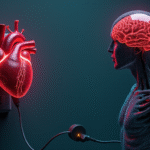Introduction to the Project
Alejandro Armenta Mier, the governor of Puebla, has unveiled plans to establish a new economic development hub called the “Capital of Technology and Sustainability.” This ambitious project aims to become Mexico’s first scientific and technological park, attracting both domestic and foreign investment with a focus on strengthening the internal market and reducing imports.
Project Details
- The development hub spans 275.2 hectares in the municipalities of San José Chiapa and Nopalucan, connecting the central highlands’ economic corridors with the Gulf of Mexico.
- The project’s impact extends to eight municipalities, home to over 245,000 residents.
- Strategically located near Puebla city and the Arco Norte highway complex, it ensures easy access to the Valle de México, Tlaxcala, and Veracruz port.
- The site is designed for productive areas such as advanced manufacturing, automotive, specialized textiles, electronics, chemical industry, and plastic/rubber industries, aiming to create over 6,000 jobs in the medium and long term.
Existing Infrastructure and Investments
Armenta Mier highlighted that the development hub already has essential infrastructure, including roads, electricity, water, drainage, and connectivity. These conditions support business and industry operations, fostering regional development and attracting investments.
- The state government has invested 600 million pesos to ensure a 50-year electricity supply.
- Existing businesses include Tonalli solar panel factory, with both migrant and local capital, and a food production facility.
- Companies already operating in the area are Audi, HBPO, Thyssenkrupp, TI Automotive, Forvia, Truk&Wheel, Kuehne+Nagel, Syncreon, Harina Altiplano, Heineken, La Morena, Tamariz, and San Marcos.
- Audi has a 460-hectare plant with an initial investment of 1.3 billion USD, employing over 5,000 people. The company has allocated 1 billion euros for transitioning to electric mobility.
Educational Institutions and Incentives
The development hub hosts several educational institutions, including the Tecnológico Oriental University, Politécnica de Puebla University, Benemérita Autónoma de Puebla-Tepeaca Campus, Interserrana del Estado de Puebla-Ahuacatlán University, and the San José Chiapa Technological Institute, along with the National Polytechnic Institute.
- The Centro de Especialización de Recursos Humanos de Alto Nivel (CERHAN) and the Centro de Mantenimiento Optoelectrónico of the Secretaría de Marina are also present, focusing on maintaining naval systems.
From a Lost City to Tech Capital
Armenta Mier explained that the development hub is built on the former site of the unfinished “Ciudad Modelo” or “lost city,” once considered a white elephant due to its unrealized 2017 plans.
- The state government invested 10,000 million pesos in platforms during previous administrations, which could have cost only 1,000 million.
- Armenta’s administration allocated around 1,000 million pesos by 2025 to create conditions for private investment attraction.
- The governor mentioned signed commitment letters with investors for 70% of the available spaces in the development hub, demonstrating project viability.
Dispersing Wealth and Fostering Development
Armenta Mier emphasized aligning Puebla’s State Development Plan with the National Development Plan, focusing on human development, poverty reduction, and vulnerability mitigation.
- The “bioética social” model prioritizes inclusive development, preventing wealth concentration, and promoting national economy to achieve technological sovereignty.
Key Questions and Answers
- What is the main goal of Puebla’s economic development hub? The primary objective is to establish Mexico’s first scientific and technological park, fostering technology and sustainability.
- What industries will the hub focus on? The hub aims to support advanced manufacturing, automotive, specialized textiles, electronics, chemical industry, plastic, and rubber industries.
- What is the significance of the “bioética social” model? This model prioritizes inclusive development, preventing wealth concentration and promoting national economy to achieve technological sovereignty.
- What is the ultimate goal for Puebla by 2030? Armenta Mier envisions Puebla becoming Latin America’s Silicon Valley, attracting technology and talent, with a focus on robotics applications, design consolidation, sports university, Carmen Serdán houses, and leading the energy transition.
- How does the government support cooperatives? The government promotes cooperatives of producers, such as coffee, footwear, and mezcal, to foster local employment and economic growth.






